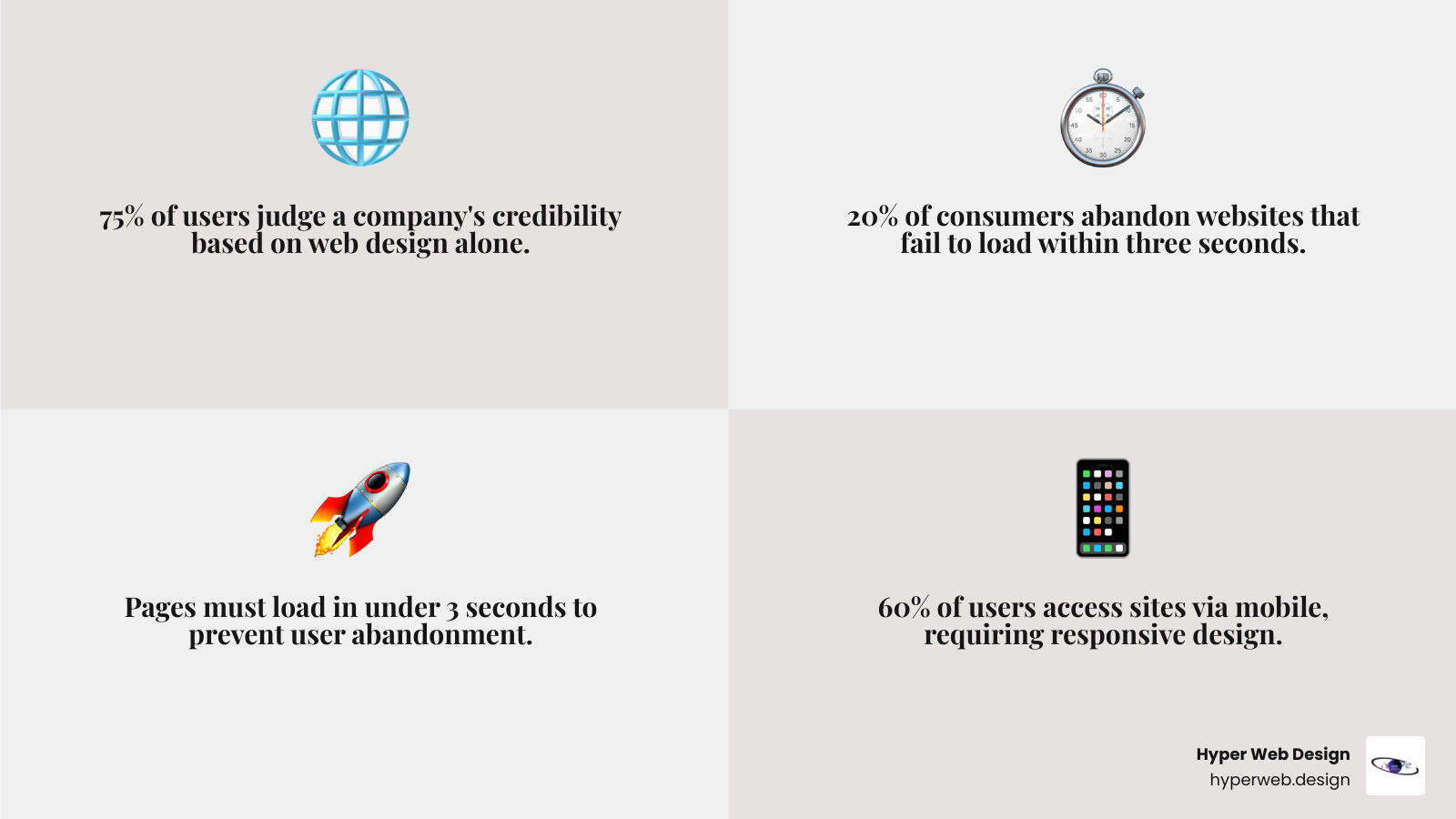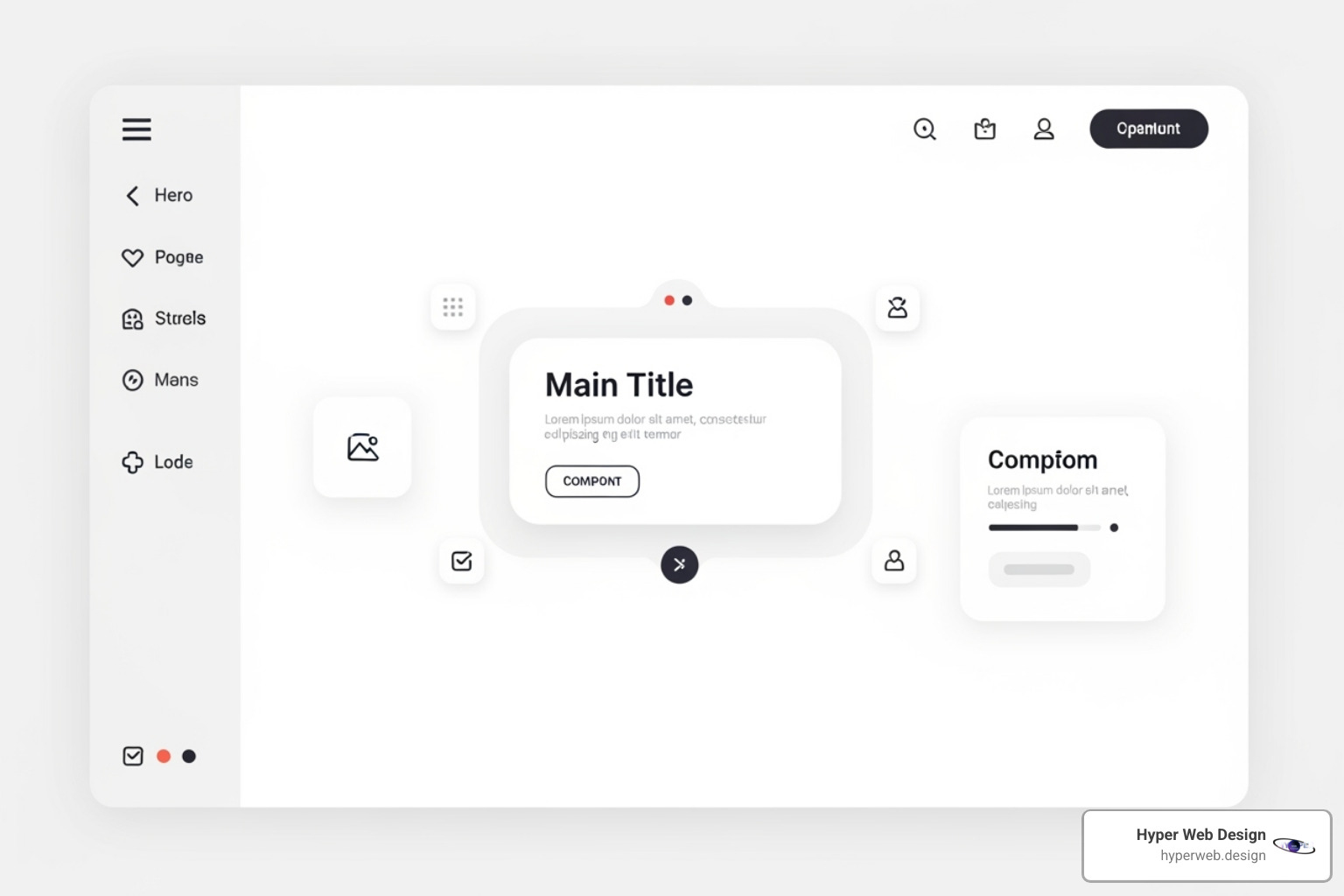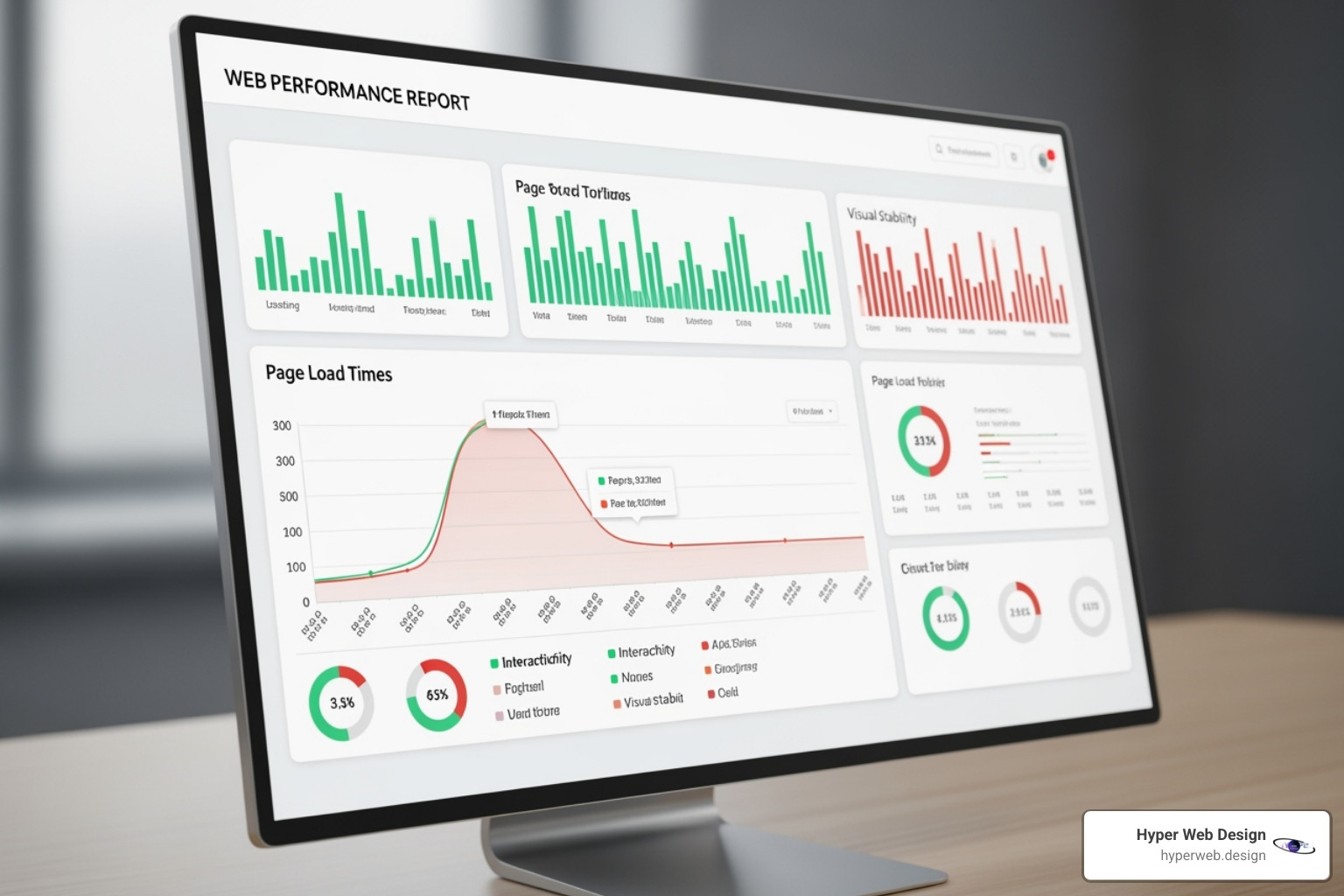Why Milliseconds Define Your Digital Success
High performance website design is the foundation of digital credibility and business growth. Research shows that 75% of users judge a company’s credibility based on its web design, and 20% of consumers abandon websites that fail to load within three seconds. Speed isn’t just a nice-to-have—it’s essential for survival.
Core requirements for a high-performance site include sub-3-second loading speeds, mobile optimization, clean code with lightweight frameworks, WebP image optimization, efficient content delivery via CDNs, intuitive UX, and meeting Google’s Core Web Vitals for SEO.
The stakes are high. As one industry expert noted, “milliseconds generate millions in revenue”—a reality luxury brands understand when competing for discerning customers who expect perfection.
For over a decade, I’ve specialized in creating high performance website design solutions for luxury brands. My approach blends visual excellence with technical precision, delivering websites that look stunning and perform flawlessly across all devices.
Quick high performance website design definitions:
The Blueprint for High-Performance Website Design
Building a high performance website design is like crafting a luxury sports car: it needs a powerful engine and aerodynamic design. Every component must work in harmony to deliver the speed and elegance your brand deserves. A split-second delay can be the difference between a user who stays and one who clicks away to a competitor.
Foundational Elements: Code, Server, and Architecture
A lightning-fast website starts deep in the code, server, and architecture.
Clean code is your secret weapon. We write lean, efficient code and select lightweight frameworks that add functionality without bulk. Bloated code only slows you down. Modern servers can easily handle tasks like on-the-fly HTML compression, but using that power effectively is key.
Server response time is critical. Your Time to First Byte (TTFB) should ideally be under 200ms. This depends on quality hosting and optimized database queries. A poorly structured database can create a digital traffic jam, so we ensure queries run efficiently, allowing information to flow smoothly from server to screen.
Our expertise in Advanced Web Design Technologies keeps your website performing at peak levels. We also focus on Scalable Website Design, building architectures that anticipate growth, so your site maintains its speed whether you have 100 visitors or 100,000.
On-Page Optimization for High-Performance Website Design
Once the foundation is solid, we optimize what users see and interact with.
The critical rendering path is about first impressions. We prioritize loading essential text and basic styling instantly, giving users something to engage with while other elements load in the background. Above-the-fold content must be compelling and fast-loading, with impactful headlines and clear calls to action, avoiding heavy media.
Image optimization offers the biggest performance wins. Compressing images into next-gen formats like WebP can reduce file sizes by 70-80% without losing visual quality. For video optimization, we recommend hosting on platforms like YouTube or Vimeo to keep your server lean.
Lazy loading is another key technique. Instead of loading all media at once, we only load what’s visible in the user’s viewport. As they scroll, content loads just in time. This dramatically improves initial load speeds, which is crucial for Mobile-Friendly Site Design where network speeds vary. The result is a website that feels instant, looks stunning, and keeps users engaged.
Delivery and Caching: The Unseen Speed Boosters
Your website’s design and code are the showroom and engine, but delivery and caching are the roads that bring customers to you. This invisible infrastructure is essential for a high performance website design.
Minimizing HTTP Requests and Reducing Server Load
Every element on your page—HTML, CSS, scripts, images—is a separate file request. To reduce these “trips” to the server, we use several strategies:
- File Combination: We merge multiple CSS and JavaScript files into single, streamlined packages.
- CSS Sprites: We combine multiple small images like icons into one file, using CSS to display only the needed portion.
- Inlining: For tiny code snippets, we sometimes embed them directly into the HTML to eliminate a request entirely.
Browser Caching and Gzip Compression
Browser caching stores copies of your site’s assets (images, scripts) on a visitor’s device. On return visits, the browser loads these local files instantly instead of re-downloading them, making the experience lightning-fast and reducing server load.
Gzip compression shrinks files before they’re sent from your server. The visitor’s browser automatically unzips them. This background process significantly speeds up download times and saves bandwidth.
Asynchronous Loading and File Optimization
Traditional websites load elements one by one. Asynchronous loading allows multiple elements to load simultaneously without blocking the main content. We use async and defer attributes for non-critical JavaScript, so they load in the background.
CSS and JavaScript minification strips out unnecessary characters like spaces and comments from code, making the files smaller. For CSS, we identify the critical styles for above-the-fold content and embed them directly, loading the rest asynchronously. This ensures visitors see a styled page almost instantly.
Content Delivery Networks: Your Global Speed Network
A Content Delivery Network (CDN) is a global network of servers that stores copies of your website. When a user visits your site, content is delivered from the server geographically closest to them. This dramatically reduces latency and loading times for a global audience.
CDNs also provide reliability. If one server has an issue, traffic is automatically rerouted. This distributed network easily handles traffic spikes, keeping your site fast and available. These strategies, combined with our work on SEO Optimized Websites, ensure your site performs as exceptionally as it looks.
From Design to Dominance: Measuring and Maintaining Performance
A high-performance website isn’t a one-time build; it’s an ongoing journey of maintaining speed and user experience. For a high performance website design, performance is a feature that drives business success.
The UX-Performance Symbiosis
Website performance and user experience are inseparable. Perceived performance is often more important than raw speed. A page that shows your logo and navigation instantly feels faster than a blank screen, even if the total load time is slightly longer. The initial impression is what matters.
This brings up the balance between visual complexity and speed. A stunning, oversized hero image can cripple load times. The solution lies in minimalist design principles, proving luxury doesn’t have to be heavy. Clean layouts with ample whitespace look sophisticated and load faster. We’ve also found that concise copy increases usability by up to 58%.
Strategic visual hierarchy guides the user’s eye, improving aesthetics and perceived speed. When users can instantly find what they need, the site feels faster. A slow, cluttered site suggests unreliability, while a fast, clean one builds trust. That’s why our Conversion-Focused Design approach treats speed and beauty as equal partners. For foundational research on how users assess online credibility, see the Stanford Web Credibility Project.
Essential Tools & Metrics for a Fast Website
You can’t improve what you don’t measure. We use a suite of tools to track and improve performance.
Core Web Vitals are Google’s user-centric metrics for site health:
- Largest Contentful Paint (LCP) measures how quickly the main content appears.
- First Input Delay (FID) measures how quickly the site responds to a user’s first interaction.
- Cumulative Layout Shift (CLS) tracks unexpected layout jumps during loading.
These metrics focus on real user experience, not just technical benchmarks. Our toolkit includes Google PageSpeed Insights, GTmetrix, WebPageTest, Lighthouse, Pingdom, and BrowserStack to diagnose issues and ensure cross-device compatibility.
As a Conversion Rate Optimisation Company, we optimize for speed that drives real business results and shows up on your bottom line.
Maintaining Peak Performance Over Time
The web is always evolving, so performance optimization must be continuous.
Performance budgets are key. We set clear limits on page weight and load times from the start to prevent “feature creep” from slowing down the site over time.
Regular audits and continuous monitoring are like maintenance for a luxury car. We use tools like Google Analytics and Hotjar to understand not just site speed, but also user behavior.
A/B testing provides objective data for optimization decisions. Instead of debating whether a new feature will slow things down, we test it with real users to ensure every change improves the experience.
At Hyper Web Design, we understand your website is a living extension of your brand. Our commitment to high performance website design doesn’t end at launch. We help it evolve with your business, maintaining the perfect balance of speed and sophistication.
Ready to see what a truly optimized website can do for your brand? Let’s build something extraordinary together.
Build your high-performance website with our expert services






